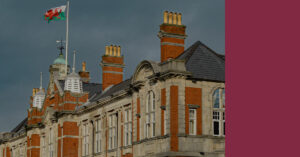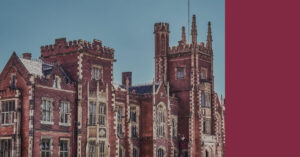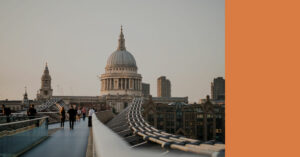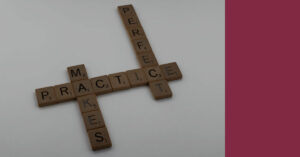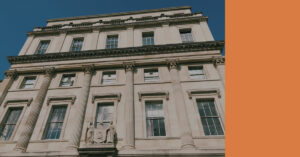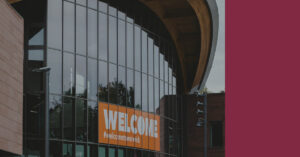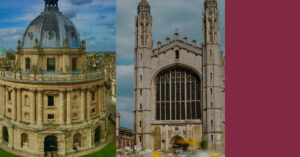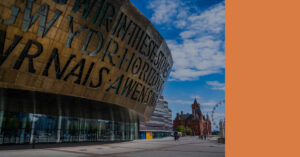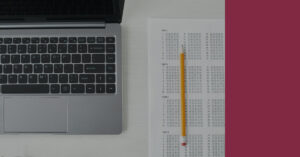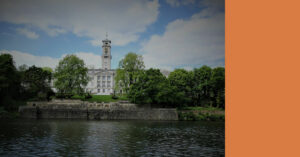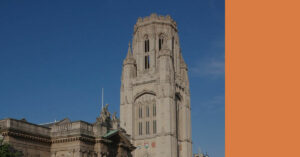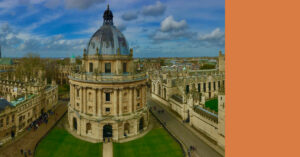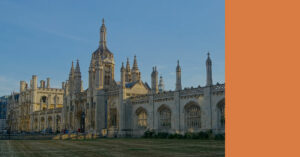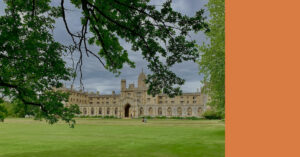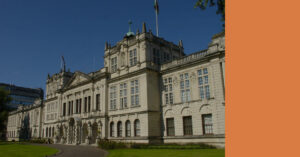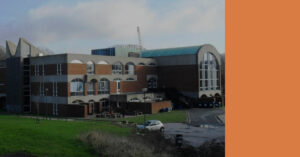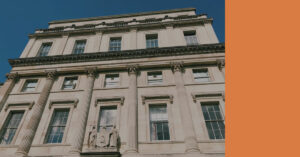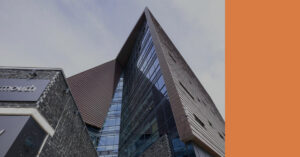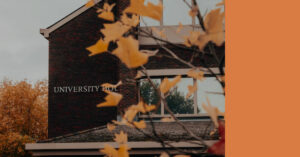Welcome to 6med’s famous UK Medical School Review series. We work with current students to produce an in-depth overview of each UK Medical School, covering what it is like to study there, how the course looks and what you need to get in.
Today, we are focussing on Barts and the London (Queen Mary) Medical School, a member of the Russell Group of UK research-intensive universities. Malikha, a Barts Medic, will share her experiences and insights as a current student throughout.
Let’s get started with some history of Barts and The London Medical School…
Overview Of Barts And The London Medical School
About Barts and The London Medical School
Barts and The London School of Medicine and Dentistry was formed in 1995 and is a combined entity of the London Hospital Medical College (the first school to be granted an official charter for medical teaching in 1785), and the Medical College of St Bartholomew’s Hospital (the oldest hospital in the UK founded in 1123) with Queen Mary University of London. Since then, the Medical School has expanded to a total of 3,410 students and 5 campuses, with the main ones based around the location of the former medical colleges and their respective hospitals.
To study Medicine at Barts, there are 2 available courses: the 5-year Undergraduate Medicine programme and the 4-year Graduate entrants Medicine programme, both leading to the final degree qualification of a Bachelor of Medicine, Bachelor of Surgery. There is also the opportunity to study abroad in Malta; a 5-year Medicine programme taught at a satellite campus on the island of Gozo opened in 2017.
Barts & The London Medical School
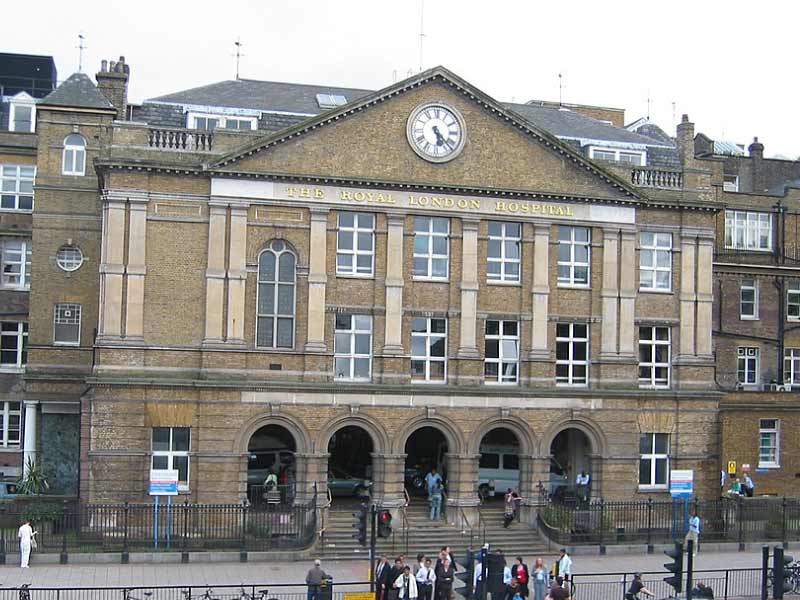
- University Age: 237
- UK Ranking: 16th
- Pint Price: £6
- Alumni Notability: 9/10
- A-level Requirements: A*AA
- Places Available: 306
- Applicant Success Rate: 12%
- Teaching Style: PBL
- Interview Style: Panel
- Admissions Test: UCAT
Barts and The London Medical School Alumni
Among Queen Mary notable alumni are: James Parkinson, for whom Parkinson’s Disease is named after; Sir James Paget, a Surgeon and founder of scientific medical pathology; William John Little, a pioneer of orthopaedic surgery; William Harvey, the first to describe circulation, and John Langdon Down, the first to identify Down syndrome and subsequently give his name to.
Why did you choose to study at Barts?
“I chose Barts because I wanted to attend a university in London for the culture and range of things to do. I already live in London and wanted to see more of the city as a university student. The reason I chose Barts over other London universities was down to course structure and intercalation opportunities – Barts has a PBL approach with learning which I enjoy as I prefer hands on and case based learning.
Barts is also the only university to offer intercalation into a Masters after 4th year rather than a BSc. The cohort is also much smaller at 70 students pre-covid which gives me the opportunity to get to know my whole year.”
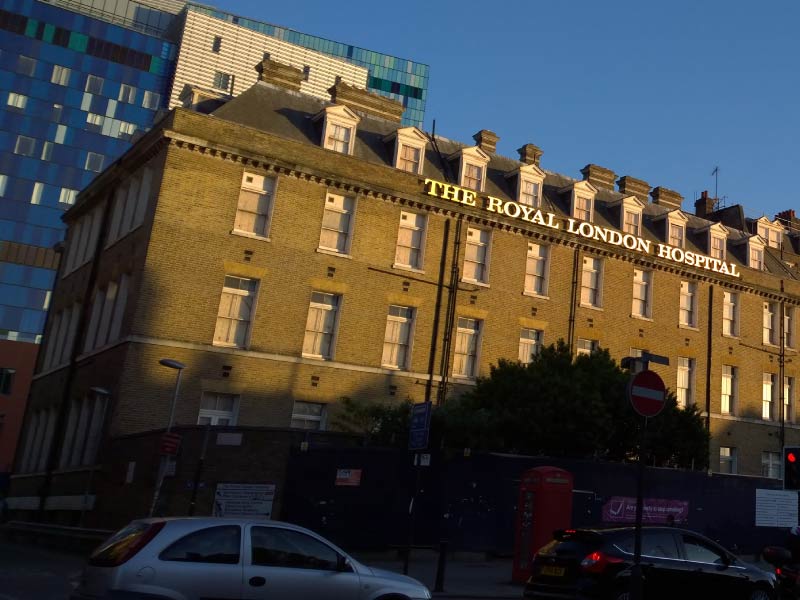
What is the best thing and worst thing about Barts Medical School?
“The best thing about the Barts is how friendly it is – because the year itself is so small and you are further divided into clinical groups (usually made up of 8-10 people but can go up to 14 with the new cohort numbers) you spend all your time with after Year 2, you get to know each other pretty well. You also get to know your clinical pretty well because again, you usually see them every week for up to 3-4 months depending on what the module is.
Medical School Rankings
The following link will take you to the Complete University Guide Medicine League Table. Here, you can see that Barts and the London (Queen Mary) Medical School takes 16th position with an overall score of 97%:
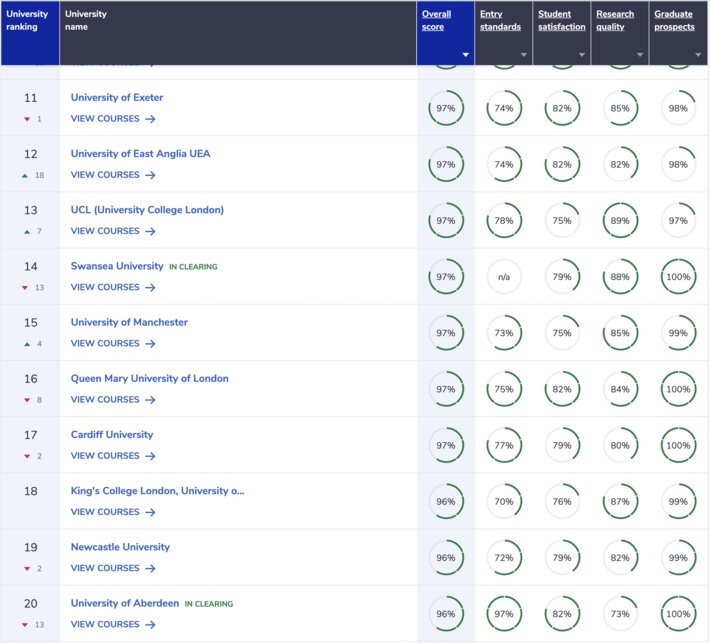
Rankings will, of course, differ between other tables; the Guardian includes different aspects to the Complete University Guide. When making your own decision on which table to look at, think about what you place more importance on, such as spending per student or career prospects. Keep in mind that all Medical Schools are highly ranked with excellent ratings across the board.
Barts Medical School Fees And Financial Support
Tuition fees for home students undertaking both the Undergraduate and Graduate courses is £9,250 per year. For international and EU students it is £40,650 annually. Tuition fee loans are offered to all UK students by the Government and cover the course fees in full. Fees do not have to be paid upfront.
In Year 5 and beyond the NHS will pay the tuition fee and for living costs, there is a £1000 NHS grant, with the opportunity to apply for a further NHS Bursary. Students are not eligible for a Queen Mary Bursary in their NHS funded year, however, in Years 1-4, there is plenty of financial support available for students by the University in the form of bursaries, scholarships and hardship funds. The Advice and Counselling Service is also available to provide guidance for students.
What are the living costs like?
“I do not live in accommodation but first year accommodation is offered by the university and is anywhere from £130 to £200 a week. After first year, you organise accommodation yourself and this can be from £100 to £300 a week depending on the place you choose and how many flatmates you live with. Travel costs are £2 – £4 each way by tube depending on the area you want to go to. A pint is around £6. There are a lot of things to do in London and near Barts such as mini golf, eating out, go karting or bowling and the cost can range from £10 – £25. A lot of places near university and in general offer a student discount as well as an NHS card discount so be on the lookout!”
Not sure where to start with your Medical School application?
Our Complete Bundle provides support for your Personal Statement, UCAT, BMAT and Interview and guides you to a successful application.
With our Complete Bundle, we guarantee that you will get at least one offer to study Medicine, or your money back.
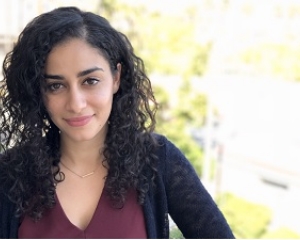

Studying at Barts and the london medical school
The curriculum is taught in a series of modules which are based on body systems which, in turn, encompass various scientific and medical themes. Each system is visited a minimum of three times during the programme. Collaborative learning through the programme of Problem Based Learning scenarios (PBLs) is encouraged. In addition, learning is facilitated by a programme of lectures, workshops and other group activities. Regular patient contact is also a key feature of these early years.
The teaching style gives students medical cases to solve and learn from which is often facilitated by a tutor in group sessions, although a significant amount of teaching is self-directed learning. Learning is supplemented with lectures and traditional bedside clinal teaching.
This patient contact time increases over the programme and in the later years students can be placed at many hospitals in and around London and Essex for their clinical placements.
What is a week in first year like at Barts Medical School?
“As first years, you will have daily lectures + occasional lab teaching. The lab teaching can be anywhere from every 2 – 4 weeks and involves learning early clinical skills such as setting up a dental bay or taking a patient history. You won’t see any patients in first year but you will learn the skills you need to interact with them. The lectures are usually 1-2 hours long and you’ll have about 2-3 a day. Most Wednesday afternoons are off, with the occasional week day off too. This gives enough time for socialising and any society meet ups and most societies will organise events to be during the Wednesday time off.
Currently, all lectures are online but this is subject to change in the future. You will have a few ICAs (in course assessments) throughout the year and these are just to test your knowledge and to make sure you are keeping up with your studies. Most first years spend a week or two studying in the library before them. You can resit if you fail but do your best to avoid this by keeping on top of all your work!”
Barts Medical School Degree Content
There are two Medicine courses offered at Barts and The London. The first is the Undergraduate Course.
Undergraduate Medicine Course
The programme is divided into 3 phases:
Phase 1 – Body in Health (Year 1 and Year 2), Mechanisms of Disease (Year 1 and Year 2).
Phase 2 – Clinical Basis of Medicine (Year 3 and Year 4).
Phase 3 – Preparation for Practice (Year 5).
There are 13 separate Student Selected Components (SSCs) across the 5 years comprising 20% of the total programme, split into either blocks or long-running. They can be undertaken in several areas of interest including basic sciences, clinical specialities, community and public health, ethics and law and understanding research.
Applications to study for an optional Intercalated Degree will be considered from post 2nd/3rd/4th year Medicine and students must have passed their current year in order to take up an offer of a place on an intercalated programme. These can take place either at the University or at external Universities. There are 11 intercalated courses available: Biomedical Engineering and Clinical Materials (iBSc), Experimental Pathology (iBSc), Global Public Health (iBSc), Infectious Disease and Epidemiology (iBSc), Medical Education (iBSc), Molecular Medicine (iBMedSci), Molecular Therapeutics (iBMedSci), Neuroscience (iBSc), Oral Biology (iBSc), Pre-hospital Medicine (iBSc) and Sports and Exercise Medicine (iBSc).
In Year 5, students can undertake an Elective studying one or more topics in either the UK or abroad. This completes the degree and helps prepare students for entering their Foundation Years as a Doctor.
Summary of the curriculum:
Phase 1 – Years 1 and 2
Taught via a series of systems-based modules which introduce the basic biological sciences and address key topics including:
- Normal biological structure and function of cells
- Organs and body systems
- The effect of illness on people and their families
- Impact of environmental and social factors on health.
Students take five systems-based modules and three student selected components (SSCs) each year.
Regular patient contact is a key feature of these early years.
Phase 2 – Years 3 and 4:
Students return to the medical school for teaching weeks and assessments as well as being introduced to clinical medicine through placements in teaching hospitals.
Apply knowledge and skills acquired during Phase 1: work alongside clinical teams both in the hospital and also within community placements.
All students complete three SSCs a year, which are based around clinical scenarios, patient interviews and history taking and associated issues surrounding their chosen patient.
Phase 3 – Year 5:
Students are placed in the hospital and firm where they will be based for their FY1 training – they shadow the current FY1 doctor.
Community placements include GP surgeries.
Students complete their SSC programme, which may include spending time in a specialty.
Throughout the year, students return to the medical school for a teaching programme and individual sessions in communication skills teaching and simulated patient scenarios.
Students may complete their Intermediate Life Support qualification.
On successful completion of final examinations, students complete a four-week elective and this is followed by a further four-week hospital placement shadowing the FY1 doctor they will be replacing following graduation.
The other Medical Course is the Graduate Course.
In the 4-year Graduate Entry programme, Phase 1 is covered in Year 1, Phase 2 in Years 2 and 3 and Phase 3 in Year 4.
Graduate students will also have SSCs throughout the programme and the opportunity to undertake an elective in Final Year
The Dentistry course is also a 5-year degree and students have access to early clinical exposure. Students get to develop their clinical skills in multiple outreach clinics and are encouraged to take a holistic approach to the discipline.
What Makes Barts and The London Medical School Unique?
What makes Bart Medical School unique?
“Barts has 2 campuses – the Whitechapel campus for medics and dentists (+ other allied courses such as pharmacy and global health) and the Mile End campus for the remaining subjects. This two campus split has created a range of different societies with a spread of different people. They also have the PASS system which is a peer assisted programme that allows older students to pass on their knowledge to younger students starting from first year.
Aside from this, due to the fact that Barts is in Whitechapel, you see unique cases you wouldn’t really see in any other part of London – the area is predominantly South Asian with a leaning towards chewing betel nut and tobacco. This leads to a range of oral cancer cases and complications that are very uncommon in the wider population.
This also creates a lot of opportunities to participate in extracurricular relating to improving oral health, such as the Teddy Bear Hospital programme, an organisation dedicated to going into schools and teaching children how to brush their teeth.”
Candidate Selection
Stage 1: applications reviewed within the Admissions Office to check they meet the minimum academic requirements.
Stage 2: applicants who achieve an overall score within or above the 3rd decile range in the UCAT will be given a score for their UCAS tariff.
Stage 3: 50:50 weighting of tariff and UCAT score determines invites for interview.
Stage 4: applicants attend interview.
Stage 5: scores from interviews compiled and offers/rejections/waiting list decision made.
Barts and The London Medical School Entry Requirements
| Exam | Undergraduate Medicine |
|---|---|
| GCSEs | must include Biology, Chemistry, English Language and Mathematics at grades 777666 (AAABBB) in any order. |
| A-levels | A*AA with first A-Level as Chemistry or Biology, the second A-Level another science (Chemistry, Biology, Physics or Maths) and the third A-Level any A-Level except Critical Thinking, General Studies or Further Mathematics if Mathematics is taken too. |
| IB | minimum requirement of 38 points with a minimum of 6 points in the Higher Level science subjects and 6 points in the third Higher Level Subject. |
| Other accepted qualifications | Irish Leaving Certificate, Scottish Highers, Cambridge Pre-U, European Baccalaureate, Advanced Placement Program, Australian Qualifications, Canadian Qualifications, Hong Kong Advanced Level Examinations, Indian Qualifications, Israel’s Bagrut Examinations, Singapore Integrated Programme Cambridge A-Levels. |
| Exam | Graduate Medicine |
|---|---|
| Degree | an upper second-class honours. There must be a component of Biology and Chemistry in your degree programme at least equivalent to AS-Level. |
| Exam | Undergraduate Dentistry |
|---|---|
| GCSEs | Must include Biology, Chemistry, English Language and Mathematics at grades 777666 (AAABBB) in any order. |
| A-levels | A*AA with first A-Level as Chemistry or Biology and the second A-Level another science (Chemistry, Biology, Physics or Maths). |
| IB | 38 points overall with 666 in Higher Level subjects. Must include Biology or Chemistry and a second science subject or Mathematics. |
| Graduate Applicants | You may apply in the final year of your degree and must be predicted/achieved at least an upper second class honours degree (or equivalent) in any subject. Degrees are divided into three categories: – Bioscience degrees which DO contain sufficient biology and chemistry – no further A or AS level requirements – Science degrees which lack biology or chemistry then candidates must have a minimum A or AS level grade C for biology and/or chemistry (depending on what is missing in your degree). – Non-science degrees. Candidates must have a minimum B grade A or AS level in chemistry or biology, plus one other science also at grade B. Accepted science subjects are Biology, Chemistry, Physics, Maths, and Psychology. You may apply with achieved or predicted grades. |
Medical School application causing you confusion?
Our Complete Bundle provides support for your Personal Statement, UCAT, BMAT and Interview and guides you to a successful application.
With our Complete Bundle, we guarantee that you will get at least one offer to study Medicine, or your money back.
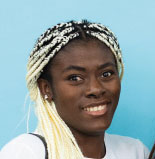

Barts Medical School Personal Statement
Barts and the London Medical School value your personal statement and use it in combination with your interview answers to decide whether to give you an offer.
Ultimately, they look for well-rounded students who have interests outside of Medicine. This shows you are more than just the subject and able to balance and cope with studying Medicine.
Barts has also outlined the importance of showing your motivation for Medicine, whether you show the qualities expected of a Doctor e.g resilience, teamwork, problem-solving and effective communication. Therefore, remember to reflect on these skills when discussing the experiences you have had.
In the line of experiences, Barts like students who have contributed to their community, so try to access some volunteering opportunities where you can to discuss. This is particularly true currently where they appreciate attaining work experience in healthcare environments is difficult! Virtual experience is another alternative they like to see.
When it comes to personal statement writing, 6med’s Personal Statement Bundle is your best bet for creating the perfect statement!
Barts and The London Medical School Admissions Tests
UCAT Requirements
You need to undertake the University Clinical Aptitude Test (UCAT) in order to apply for the Queen Mary University. Applicants will be ranked according to a 50:50 weighting of their UCAT score and academic ability measured by UCAS tariff compared to other applicants (UCAS tariff is calculated based on a number of academic and non-academic qualifications listed on your UCAS application). Interviews are not offered if a total UCAT score falls below the 3rd decile.
Over the last few years, the top and bottom UCAT scores for applicants that receive offers for interviews are 3280 and 2300. Check out our UCAT Scoring Guide to learn more!
The BMAT is not required.
Barts and The London Medical School Interview
The number of students interviewed is roughly double the available spaces on the course.
Interviews usually take place at the Whitechapel campus between January and March.
Panel Interview Style
Barts offer a 20-minute Panel Interview consisting of two members of senior academic or clinical staff and a medical student. In the interview the interviewers are assessing your motivation, whether you possess those skills required of a Doctor and what your contribution will be to University life.
After the interview, there will be the opportunity to tour the campus lead by current Medical Students. There are 3 outcomes to the interview: offer, rejection or waiting list. Candidates placed on the waiting list will be reconsidered following the summer examination results should they be unplaced elsewhere. Unsuccessful candidates may reapply the following year if they obtain the relevant qualifications at the first attempt.
If you’re feeling unsure about your interview skills, you can sign up for 6med’s Interview Bundle to learn everything you need to know to ace your interviews!
Example Barts and the London Medical School Interview Questions:
- What disease/conditions do you think are prominent in this area [Whitechapel/Mile End]? (2019)
- How do you cope with technology (in relation to self-directed learning and PBL)? (2021)
- What do you like about London? (2018)
- Can you elaborate on the work experience mentioned in your personal statement? (2021)
- How will you cope with the high workload at Medical School? (2018)
- What will you contribute to university life at Barts? (2020)
- Why do you want to come to Barts? (2019)
- What are the disadvantages of studying Medicine? (2021)
- Why would you be a good doctor? (2019)
Extra-Curriculars at barts medical school
Outside of study time, what do most people get up to?
“Outside of studying most people are in societies. This can be anything from cultural societies to the dental society. Most students are in Dentsoc/Medsoc for discounts on cohort events and early access to certain events. Outside of societies, all Med/Dent students have a certain number of volunteering hours they need to meet and this is done through a range of ways from vaccinations to running food banks. When it comes to relaxing, Brick Lane is full of things to do from vintage clothes shopping to eating out and bookshop browsing. Again, these places usually offer student/NHS discounts so remember to keep both cards on you just in case.
A lot of students also enjoy walking into Central London (about 30 mins walk from Whitechapel Campus) to sight see important landmarks such as St. Paul’s, Tower Bridge and Barbican Conservatory. These places also have parks to sit in and picnic in the summer. In first year, students spend most of their time getting to know their flat mates and adjusting to living out for the first time.”
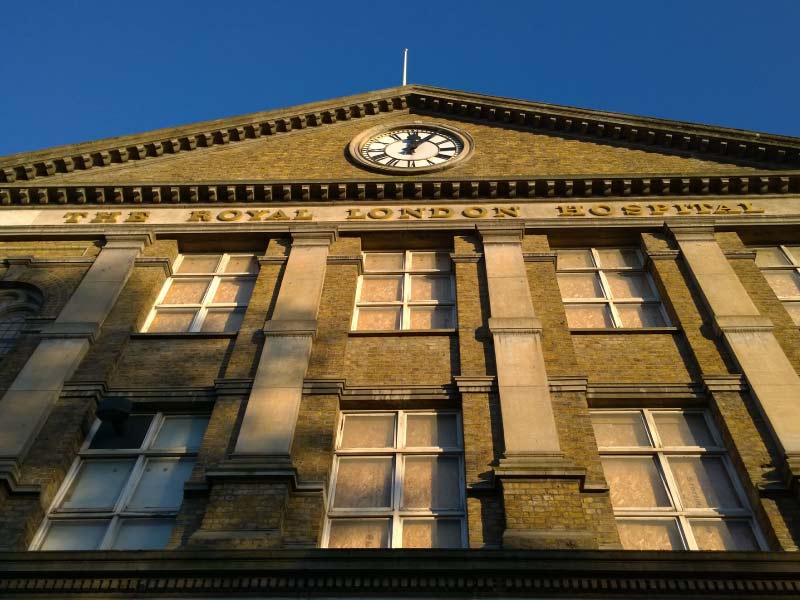
What is the Barts accommodation like?
“First years are put together so it’s easy to get to know your year and you all have the same workload so you can help each other out and your schedules align. Most students live in Floyer or Dawson. Floyer is a 5 mins walk away and Dawson is about 35 mins walk/10 minutes tube. Some students also live in Albert Stern, but this is more of a mixed accommodation so you will be with different subject and years.
Lectures and labs in first year are usually held in Whitechapel, but after Year 2, you will be seeing patients in any outreach clinic. This can be in Canary Wharf (Barkantine clinic) or Stratford (Guttman clinic) and both of these are about 30 mins away from main campus. You can also get private student accommodation anywhere else in London but you have to arrange this yourself and depending on where you pick, can be more expensive.”
Barts Medical School Contact
Email: [email protected]
Tel: 020 7882 8478
Postal address:
Student Office
Garrod Building
Turner Street
Whitechapel
London
E1 2AD
Advice for prospective barts medical school students
What advice would you give to a first-year student starting at Barts Medical School?
“Please do your lectures and assignments as you are assigned them. It is easy to look at a pre-recorded lecture and think you will do it later but you will not and then the work will start to pile up. Just because something is recorded does not mean you need to rely on the recording, and try to do the pre-reading so you can actively engage and understand what you are learning about.
I would also advise joining a few societies and sticking to them rather than signing up to everything and dropping them all by the second week of university. Another piece of advice I would give is to get involved in freshers events – this is where a lot of first years make their friends and discover most of the interests they carry through for the rest of their time at medical school.
There’s always something going on for the first month or so of university so try and get involved as much as you can!”
Check out our other UK Medical School Reviews:
Barts and The London Medical School is an exceptional place to study, and we’ll help you get there.
The 6med Complete Bundle puts all of our bundles together. You’ll get a place on five of our Crash Courses, Personal Statement re-drafts, mock interviews, Personal Statement, BMAT, UCAT and Interview Online Courses, access to BMAT & UCAT.Ninja™, BMAT essay marking and all of our critically acclaimed workbooks as e-books. To find out more, click the button below. This massive bundle is quite literally all you need for your Medicine application…
Not sure where to start with your Medical School application?
Our Complete Bundle provides support for your Personal Statement, UCAT, BMAT and Interview and guides you to a successful application.
With our Complete Bundle, we guarantee that you will get at least one offer to study Medicine, or your money back.


By Phoebe Baker
